Healing Historical Trauma
Develop an understanding of historical trauma and issues related to colonialism and imperialism.
To begin, select a category
Historical events and interactions between the First Nations, Inuit and Métis peoples in Canada and the governments of the time have resulted in conflict and trauma that continue into the present. In this brief exploration we will look at six of the many significant events and policies, their multi-generational impacts, and how First Nation, Métis and Inuit communities and their members are moving forward in healing.
Ben is puzzled after reading an article about residential schools.
 The article was about the Canadian government’s apology. Although he is supportive, he doesn’t understand the legacy of residential schools. His colleague, Minnie, tells him that the experiences and effects of intergenerational trauma continue to impact individuals, families or entire communities. She explains that medical research shows that traumatic experience manifests in various ways, changing the body’s physiology and affecting the mind and emotions. Students bring those effects to school with them, even though their parents may not have been directly involved. Ben realizes knowing more about historical events resulting in trauma may help him better understand his First Nations, Métis and Inuit students and their families.
The article was about the Canadian government’s apology. Although he is supportive, he doesn’t understand the legacy of residential schools. His colleague, Minnie, tells him that the experiences and effects of intergenerational trauma continue to impact individuals, families or entire communities. She explains that medical research shows that traumatic experience manifests in various ways, changing the body’s physiology and affecting the mind and emotions. Students bring those effects to school with them, even though their parents may not have been directly involved. Ben realizes knowing more about historical events resulting in trauma may help him better understand his First Nations, Métis and Inuit students and their families.
These are six of many historical events that have directly and indirectly impacted First Nations, Métis and Inuit in Alberta. Click on an event to see a brief overview.
Disease epidemics (1450s to now)
1450s to now
Contact infection of North American Indigenous populations with common European diseases.
1918
Spanish flu ravages northern communities.
1920s to 1960s
Higher incidence of tuberculosis.
1950s to now
Higher incidence of type 2 diabetes.
1980s to now
Higher incidence of HIV/AIDS.
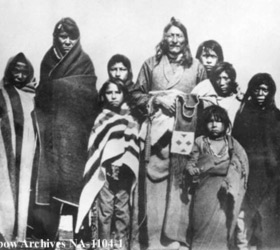
With contact began the introduction of diseases to which Indigenous populations had no natural immunity. European infectious diseases, such as influenza, measles and smallpox, combined with the other effects of European contact, resulted in the death of 85 to 95 percent of the pre-contact Indigenous population of the New World. Many families, clans and entire communities were wiped out. Kinship ties and legacies were lost.
Long-term Consequences:
Today the health of Canadian Aboriginal people continues to compare unfavourably with that of non-Aboriginal Canadians.
Addressing the Issues:
Health Canada, the Aboriginal Nurses Association of Canada, and the Indigenous Physicians Association of Canada are working to improve the health of First Nations, Métis and Inuit communities and their members by improving education and program delivery and by promoting individual and community wellness.
Residential Schools (1870s to now)
Late 1500s
Roman Catholic Church builds first residential schools in New France, Schools for the Elite, the children of Chiefs and officials of trading post and colonial outposts.
1830
Anglicans and Methodists open residential schools in Upper Canada.
1920
Compulsory attendance at residential schools of all Indian children ages 7 to 15.
1931
80 residential schools in operation across Canada.
1948
72 residential schools in operation across Canada.
1979
12 residential schools in operation across Canada.
1996
Closure of Gordon Residential School (Saskatchewan), the last federally run residential school.
2009
Apology was issued by the federal government (view apology).
2010
Truth and Reconciliation Commission hearings begin.
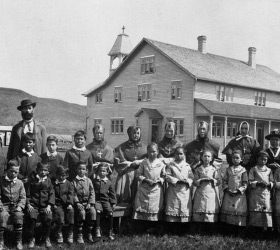
The Canadian government developed a policy of “aggressive assimilation” for teachings in the church-run, government-funded industrial schools, later called residential schools. The plan was for those coming out of residential schools to pass their adopted Eurocentric lifestyle to their children; in this way, the practice of Indigenous traditions would diminish and be completely eliminated within a few generations. In all, more than 150 000 First Nations, Inuit and Métis children were removed from their communities and forced to attend the schools.
Long-term Consequences:
Generations of families have been affected by the loss of culture, traditions, ways of being and living, language, pride, love and connection to family. As a result of the trauma, many survivors of residential schools have turned to substance abuse and have shielded their children from the believed “threat of schools.”
Addressing the Issues:
In 2009, the federal government made a formal apology to First Nations people for the consequences of residential schools. A Truth and Reconciliation Commission was established to examine the legacy of the residential schools.
Territorial Displacement of People (1700s to now)
1876
The Indian Act restructures almost every aspect of First Nations life.
1885
Riel Resistance impacts Métis way of life.
1899
Métis scrip is issued for land that was far from where the Métis lived. Scrip was often sold to land speculators.
1920
Indian residential school attendance becomes mandatory.
1932
Métis Association of Alberta is founded.
1951
Indian women who married non-status men lose their status and no longer can live in the reserve community.
1953
Inuit families are moved from Nunavik, Québec, to the High Arctic to support Canadian sovereignty claims.
1965
First Nations people work together to change government policies.
1971
Inuit Tapirisat of Canada is founded.
1982
Métis people are recognized in the Constitution as “Aboriginal Peoples of Canada.”
1985
Bill C-31 is passed, returning status to those who lost it through marriage or other circumstances.
1993
Nunavut land claim is signed.
1999
Territory of Nunavut is established. Official languages now include Inuktitut, French and English.
2003
Métis rights gain first legal recognition in Supreme Court decision on Powley.
First Nations (1725 to now)
Disease epidemics from the time of contact until the early 1900s forced survivors to band together to form new communities, which resulted in loss of cultural identity. With the signing of treaties and the cession of lands beginning in 1725, the movements of First Nations people have been limited. The numbered treaties further restricted movement over traditional lands and limited occupancy to defined tracts of land. In 1876 the Indian Act legislated who was recognized as an Indian. The movement of those living on reserves was restricted as the Indian agent’s permission was required to travel off reserve.
Thousands of children were removed from their families and home communities to attend residential schools, resulting in loss of community and kinship connections and identity.
Dire economic conditions on some reservation lands have driven many people into cities where they still experience poverty and displacement.
Long-term Consequences:
Suppression and loss of identity and culture occurred. As diverse peoples were joined together by choice or reserve system allocations, traditional practices and unique cultures were lost.
Addressing the Issues:
Governmental recognition of traditional sacred lands has led to negotiations and some agreement on use. Where there is resource exploration and use, First Nations and traditional land users are being included in negotiations as well as development. Land claims continue to be a challenge; however, positive movements are underway.
Métis (1865 to now)
In the early 1880s, many Métis, demoralized by the labels “half-breed” and “road allowance people,” and ostracized from both mainstream Canadian society and the reserve system, were starving, angry and desperate as a result of government’s continuous disregard of their land claims. The Métis were excluded, swindled, intimidated or killed in order to move them off the land. Threatened with the loss of their rights, culture, land, their very survival, as they had been 20 years prior in Manitoba, they took up arms to resist governmental actions and its militia, in what is now known as the Riel Resistance of 1885. Political and community leaders were imprisoned, exiled or hanged, resulting in the disappearance of Métis communities and way of life.
Long-term Consequences:
Suppression of identity and culture occurred for over 70 years during which many Métis hid their Métis identity even from their children and family.
Addressing the Issues:
Today we see a resurgence of Métis cultural identity and political organizations with the establishment of Métis Nations across Canada. They continue to push for respectful recognition of their inherent rights and political existence within Canada.
Inuit (1950s to now)
In 1953, Inuit families were forcibly relocated to the uninhabited and inhospitable High Arctic, 1500 kilometres north of their traditional homeland of Nunavik, in northern Québec. The goal of the move was to extend Canadian claims of sovereignty to Ellesmere Island, due to Cold War tensions. As a result, Inuit people were forced to endure the pain of families torn apart and many years of hardship. Today, northern Indigenous people still need to leave their families and communities to relocate in the south in order to receive advanced educational or medical services.
Long-term Consequences:
There was a loss of family structures and connection to community. The result was a distrust of government and its motives regarding Inuit people and their way of living and being.
Addressing the Issues:
The resilience and strength of the Inuit people is evidenced through moves to self-governance and representation. They moved toward reconciliation and negotiated self-government and settlements with the federal government.
Banning of Ceremonies (1884 to now)
1884
Banning of potlatch.
1923
Banning of traditional land use in area of the Williams Treaties.
1925
Banning of powwows, sweat lodges and Sundance under the Indian Act.
1951
Indian Act amended to allow cultural ceremonies to take place.
Present
Revival of ceremonies and traditions.
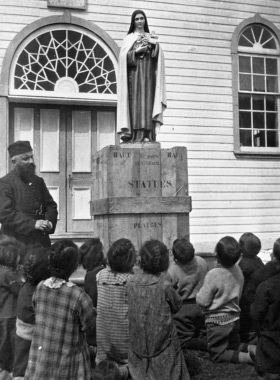
Traditional rites and ceremonies, such as Sundances, powwows, potlatches and sweat lodges, went underground or ceased as a result of the Indian Act. This legislation banned all celebrations, ceremonies and rites important to Indigenous communities, taking away and attempting to destroy their cultural practices and identities.
Long-term Consequences:
Disconnection from community and ancestors, traditions, values and teachings have left many Inuit, Métis and First Nations people searching for connections to the past to reclaim lost identities, ways of being and living, and pride in identity and community.
Addressing the Issues:
There has been an open revival of Sundances, contemporary powwows, as well as other ceremonies in First Nation communities in Alberta. These traditional ceremonies are openly practised by many First Nations people.
Apprehension of Children (1500s to now)
1500s to 1700s
Indigenous people of North America were kidnapped as New World oddities and for slave labour.
1920s to 1960s
Mandatory attendance at residential school required separation from families and home communities.
1960s to now
Children are removed from family situations under the Child Welfare Act.
1980s to now
Children are removed from family situations under the Child Welfare Act.
Present
Increasing numbers of First Nations, Métis and Inuit organizations and agencies provide services and supports in an attempt to reduce the number of children in non-Aboriginal care. Other support systems have increased for families in need of assistance.
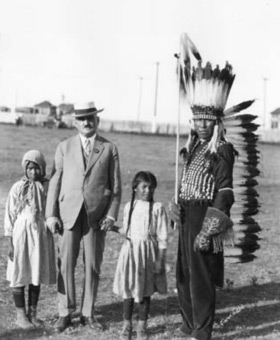
Since first contact there has been a history of Indigenous individuals, especially children, being taken from their homes and families. At first they were taken back to Europe as curiosities of the New World. Later entire villages were captured and shipped to the Caribbean as slaves and labourers. With the forced assimilation of the 1920s to the late 1960s, children ages 7 to 15 were taken from home villages to be acculturated at residential schools.
The “Sixties Scoop” resulted in thousands of Aboriginal children being taken from their families and placed in foster or institutional care, or being adopted by non-Aboriginal families outside of Canada. While the overt removal of Aboriginal children from their family situations may have lessened, Aboriginal children still make up almost half of the children in the protective care of the province.
Long-term Consequences:
The placing of Aboriginal children into non-Aboriginal families has resulted in loss of cultural identity, feelings of displacement, and low self-esteem. Victims without solid family ties and role models continue to experience dysfunction in their relationships.
Addressing the Issues:
Aboriginal organizations and agencies are addressing the issues of the past through support programs that assist victims of cultural displacement and social welfare apprehension. Recovered and healing victims are better able to address the hidden needs of generational victims through culturally appropriate practices and supports.
Disregard of Patriotic Contributions (1530s to now)
1784
Thayendanegea, known as Capt. Joseph Brant, is the first Aboriginal leader to be commissioned in the British army.
WW I and WW II
First Nation, Métis and Inuit communities supported the war efforts. More than 12 000 men served as soldiers but were denied the benefits that other veterans received.
2002
The federal government offers financial settlements to First Nations veterans. Funding is provided for Métis Veterans Outreach program and other recognition of service.
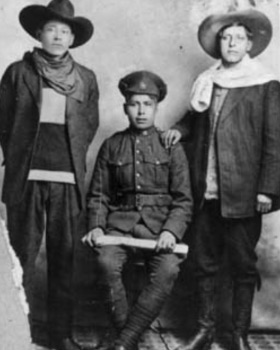
The Indigenous people of Canada have contributed to the defense of Canadian lands and ideals since the days of New France. First Nations warriors were responsible for defeating each and every invasion of the colony whether it was New France or Upper and Lower Canada. In 1784 in appreciation of their loyalty and commitment to the English Crown, the Six Nations People were given lands around what is now Brantford, Ontario. These lands were named for Thayendanegea, known to the English as Captain Joseph Brant, the first Aboriginal leader to be commissioned as an officer of the British army.
In each of the modern wars and international conflicts, Aboriginal men and now women have enlisted to serve Canada. It is estimated that up to 12 000 Aboriginal soldiers served in the two World Wars and the Korean War alone. The volunteer rate of 35 percent of those eligible to enlist was higher than for any other ethnic group in Canada. During the World Wars, First Nation, Métis and Inuit communities across Canada supported the war effort through purchase of war bonds, increased agricultural production and provision of lands to the government for military purposes.
Upon their return Aboriginal veterans did not receive any of the standard veteran benefits extended toward non-Aboriginal Canadians. For over 50 years Aboriginal veterans, their families and their communities dealt with not only the painful memories of war, but also with the lack of recognition of their contribution and sacrifice. Not until 2002 were the efforts of Aboriginal war veterans officially addressed.
Long-term Consequences:
Many returning veterans have experienced displacement, disregard and damaged self-image as they were treated as second-class citizens. As second-class people they were not accepted by Canadian society, and due to the trauma they had witnessed, they were unable to effectively reintegrate. Just as other veterans of military violence suffered from post–traumatic syndrome, so too did Aboriginal veterans, but without the understanding and supports provided to others.
Addressing the Issues:
In 2002 the federal government recognized the contribution of Aboriginal veterans by offering First Nations veterans and their spouses settlements of $20 000. This offer did not extend to non-status First Nations, Métis or Inuit veterans. In 2002 the National Métis Veterans Association launched a legal suit against the federal government; in response the government has provided funding for a Métis Veterans Outreach Program and a documentary film about the military contributions of Métis veterans and their experience upon returning home to Canada.
Reflection Statement
Unresolved historical trauma continues to impact the lives of many Indigenous people today. Similar to post-traumatic stress, historical trauma ripples from one generation to the next. The multifaceted process of reconciliation and healing depends on social, economic, cultural, physical and psychological factors. Moving forward from historical trauma requires recognition, support and commitment.
How might historical trauma impact the students, families and communities where you teach?
Lois Edge shares a poignant story of her disconnection from identity as a young Aboriginal student.
Speakers in these interviews tell about their personal and community journeys, moving from the impacts of colonization and the loss of identity, to coming full circle by revitalizing traditional ways.
Select a video.
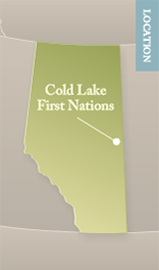
Allen Jacob | Dene Suliné | Cold Lake First Nations
Elder Allen Jacob, Dene Suliné, speaks about the effects of colonialism on the psyche of his people.
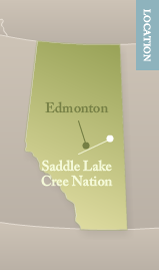
Jerry Wood | Plains Cree | Saddle Lake Cree Nation | Urban Elder
Cree Elder Jerry Wood talks about his experience at residential school and his journey to embrace traditional knowledge.
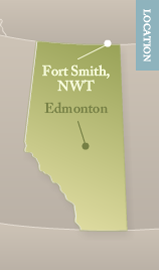
Lois Edge | Métis–Gwitchin | Fort Smith, NWT | Urban Aboriginal
Of Gwich’in, Cree and Métis roots, Lois Edge shares a poignant story of her disconnection from identity as a young student.
Lois recently completed a Ph.D. in Educational Policy Studies with a specialization in Indigenous Peoples' Education.
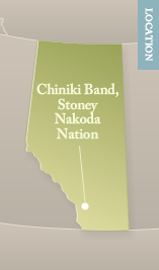
Sykes Powderface | Nakoda | Chiniki Band, Stoney Nakoda Nation
Elder Sykes Powderface, Stoney Nakoda Nation, outlines the four eras of residential schools when speaking to an advisory committee for this resource.
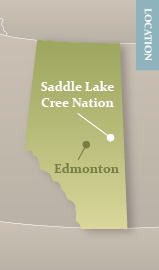
Nellie Carlson | Plains Cree | Saddle Lake Cree Nation | Urban Elder
Nellie Carlson, a member of the group who marched to Ottawa regarding Bill C-31, talks about how living at residential school differed from living in her Cree home.
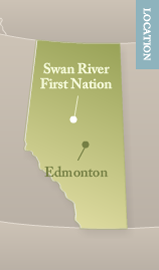
Jarod Sawan | Woodland Cree | Swan River First Nation | Urban Aboriginal
Singer Jarod Sawan, adopted out when very young, shares his experience of rediscovering his Cree family.
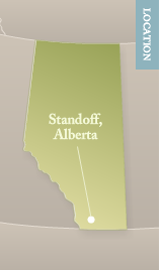
Strike Them Hard!
Drama teacher Ramona Big Head, Kainai, wrote and produced a play about the Baker Massacre from a Blackfoot/Blackfeet perspective. The play, which contains violent and disturbing events, was performed by students from Grades 1 to 12. Because of the nature of the play, teachers are reminded that Walking Together is not authorized for student use.
Select a resource type from the list.
Web Links
While some First Nations, Métis and Inuit experts have recommended these web links, they are not authorized by Alberta Education.
A Lost Heritage: Canada's Residential Schools. CBC Digital Archives
Focusing on archival materials on residential schools, this CBC website provides 14 television clips and 8 radio clips from 1955 to 2002. These clips include interviews with students, a visit to a residential school, and stories of abuse and the impact of loss of language. More recent clips focus on healing through theatre, compensation, a long-awaited apology, and response from the Catholic church. Related lesson plans, educational activities and links are included.
Legacy of Hope Foundation
This national Aboriginal charitable foundation supports the healing of residential survivors and raises awareness about the legacy of residential schools. The website includes Where Are the Children?, a virtual exhibition for students ages 12 to 18 that provides a reconstruction of the Mohawk Institute in Brantford, Ontario, and an interactive component that allows the user to sit at a desk with a virtual textbook, dictionary, map and timeline . Publications and a DVD may be ordered at no charge on the website.
Exile. IsumaTV
This 48-minute online video documents the forced relocation of Inuit families in 1953 from northern Québec to the High Arctic. In Inuktitut with English subtitles, the documentary presents events from the perspectives of the people who were forced to endure them. Zacharias Kunuk, an Inuit whose films include Atanarjuat (The Fast Runner), directed the film.
The Métis in Alberta. Métis Veterans. Alberta Online Encyclopedia
This web page provides a brief description of the history of Métis veterans. Also included are links to videos on Métis actions for compensation for denial of benefits.
Aboriginals and the Canadian Military. CBC News
This CBC News web page summarizes the history of First Nations, Métis and Inuit participation in the War of 1812, the First World War, the Second World War and the Korean War. It describes the family tradition of military service and the need to honour the past. Links and sources are included.
Apology for Indian Residential School System. Prime Minister Stephen Harper
On June 11, 2008, Prime Minister Stephen Harper recognized the profoundly negative consequences of the residential school policy. This web page provides the text of the speech in which he asked the forgiveness of Aboriginal peoples for failing them so profoundly.
Documents
While some First Nations, Métis and Inuit experts have recommended these web links, they are not authorized by Alberta Education.
Historic Trauma and Aboriginal Healing. Cynthia Wesley-Equimaux and Magdalena Smolewski
This academic analysis provides historical background and analyzes cultural transitions, dispossession and oppression, and the impact of trauma. The article could be disturbing for some readers and should not be shared with students. Teachers are encouraged to become familiar with other topics in Walking Together before encountering this insightful, controversial, painful, and ultimately hopeful article.
Residential Schools. Peoples and Cultural Change
This excerpt from Peoples and Cultural Change (Aboriginal Studies 20) provides background information on residential schools and distinguishes between mission schools, industrial schools, and residential schools. Interviews with survivors present both positive and negative experiences from residential schools.
Relocation of Aboriginal Communities: Case Study: The Mushuau Innu and Davis Inlet. Peoples and Cultural Change Teacher Resource
This excerpt from Peoples and Cultural Change Teacher Resource (Aboriginal Studies 20) introduces relocations and presents a case study on three relocations of the Mushuau Innu.
Child Welfare: An Aboriginal Perspective. Peoples and Cultural Change Teacher Resource
In the 1960s, in what was later known as the “Sixties Scoop,” many First Nations, Métis and Inuit children were removed from their homes, often to be placed with non-Aboriginal families. This excerpt from Peoples and Cultural Change Teacher Resource (Aboriginal Studies 20) provides statistics on child removal and background information on child welfare reform, current issues and custom adoptions.
Aboriginal Languages: Revitalization. Peoples and Cultural Change Teacher Resource
The importance of maintaining traditional languages has led to efforts to revitalize language learning and use. This excerpt from Peoples and Cultural Change Teacher Resource (Aboriginal Studies 20) provides an overview of revitalization efforts in Alberta and includes a list of resources.
Residential Schools. Peoples and Cultural Change Teacher Resource
In 2005, the Assembly of First Nations and the federal government agreed to financial compensation for former students of residential schools and funding for events, projects and memorials at a national and community level. This excerpt from Peoples and Cultural Change Teacher Resource (Aboriginal Studies 20) describes the truth and reconciliation process, several projects and additional resources.